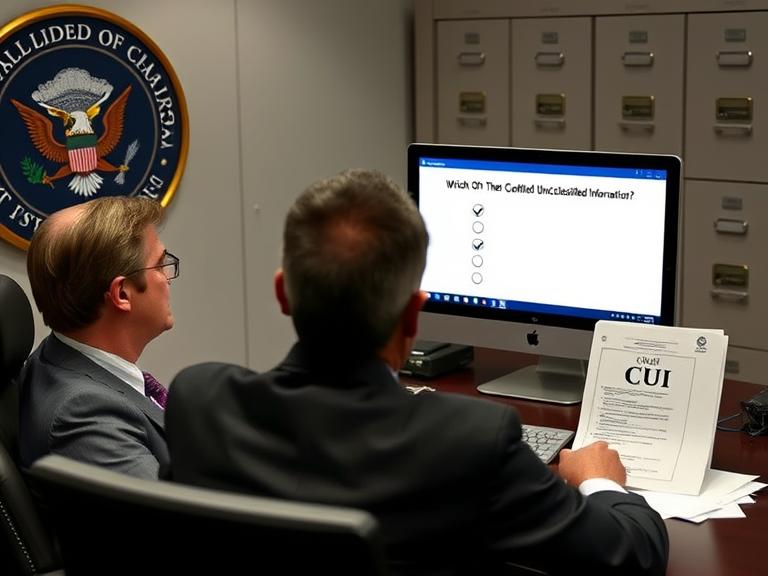Which Of The Following Is True Of Controlled Unclassified Information: Controlled Unclassified Information (CUI) refers to sensitive government-related data that, while not classified, still requires protection from unauthorized disclosure. Unlike classified information (Confidential, Secret, or Top Secret), CUI is not national-security classified but still demands safeguarding under federal laws and policies.
This article explains:
- The definition and purpose of CUI
- How CUI differs from classified information
- Common categories of CUI
- Handling and protection requirements
- FAQs about CUI management
Table of Contents
Definition and Purpose of CUI
CUI is information created or possessed by the U.S. government, or an entity on behalf of the government, that requires safeguarding due to:
- Privacy concerns (e.g., personal identifiable information)
- Regulatory requirements (e.g., export-controlled technical data)
- Operational security (e.g., law enforcement sensitive information)
The CUI program was established by Executive Order 13556 (2010) to standardize protection protocols across federal agencies.
How CUI Differs From Classified Information
| Aspect | Classified Information | Controlled Unclassified Information (CUI) |
|---|---|---|
| Level of Sensitivity | National security impact | Sensitive but not classified |
| Legal Basis | Executive Order 13526 | Executive Order 13556, 32 CFR Part 2002 |
| Access Requirements | Security clearance needed | No clearance, but authorized access required |
| Marking Requirements | Clearly labeled (SECRET, TOP SECRET) | “CUI” plus category label (e.g., CUI//SP-HLTH) |
| Storage Requirements | Secure containers/SCIFs | Password protection, encrypted storage |
Categories of CUI
CUI is divided into 20+ categories under two broad groupings:
1. CUI Basic
- Applies to all agencies (default protection standards)
- Examples:
- Privacy Information (PII, healthcare records)
- Law Enforcement Sensitive (investigative details)
- Proprietary Business Information (contractor data)
2. CUI Specified
- Additional agency-specific controls
- Examples:
- Export Controlled (EAR/ITAR) – Defense technical data
- Critical Infrastructure – Power grid vulnerabilities
- For Official Use Only (FOUO) – Legacy designation
Handling and Protection Requirements
While less restrictive than classified data, CUI still requires:
1. Proper Marking
- Header/footer labels (e.g., “CUI//SP-HLTH” for sensitive health data)
- Digital files tagged with CUI metadata
2. Secure Storage
- Physical: Locked cabinets for paper documents
- Digital: Encryption, access-controlled systems
3. Limited Distribution
- Shared only with authorized recipients
- No public release without review
4. Destruction Methods
- Paper: Cross-cut shredding
- Digital: Secure deletion per NIST SP 800-88
FAQs About Controlled Unclassified Information
1. Who can access CUI?
Federal employees, contractors, and state/local personnel with approved access (no security clearance required).
2. Is CUI the same as FOUO or LES?
No – FOUO (For Official Use Only) and LES (Law Enforcement Sensitive) were pre-2016 designations now folded into CUI.
3. Can CUI be emailed?
Yes, but only via encrypted email (e.g., .gov/.mil accounts, PKI-protected).
4. What happens if CUI is leaked?
Violations may result in:
- Administrative sanctions
- Contract penalties for companies
- Criminal charges if willful misconduct
5. Do state/local governments follow CUI rules?
Only when handling federal information – their own data uses state-level protocols.
6. How long must CUI be retained?
Follows records schedules – some is permanent (e.g., patents), some destroyed after set periods.
Conclusion: Why CUI Management Matters
Proper CUI handling:
✔ Prevents identity theft (protects PII)
✔ Safeguards economic interests (secures trade secrets)
✔ Maintains operational security (limits sensitive data exposure)

